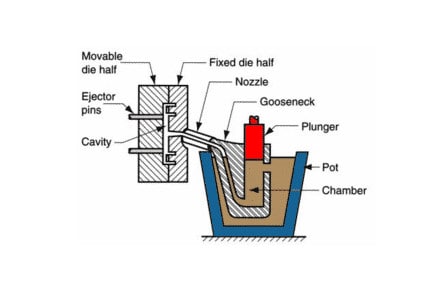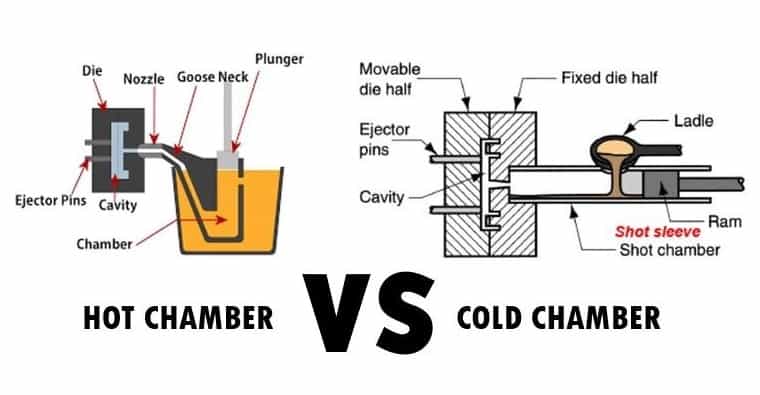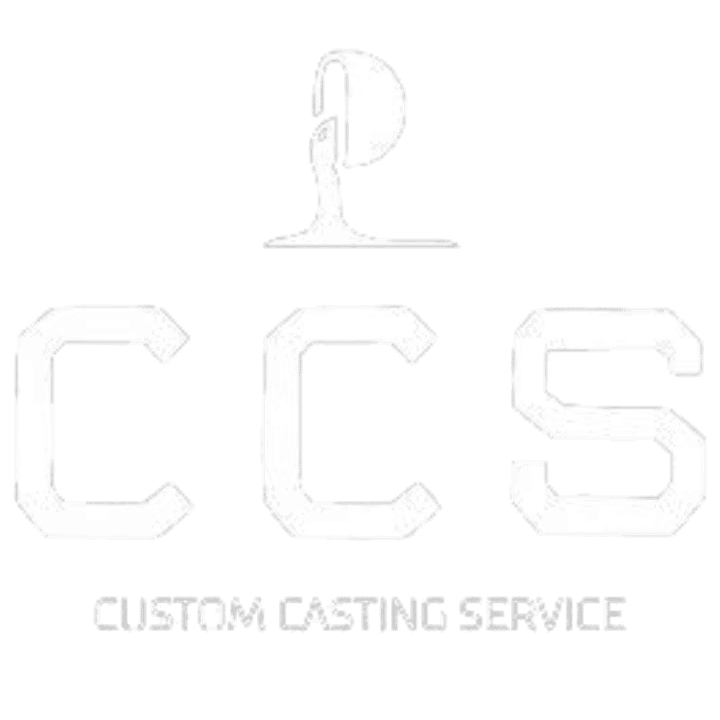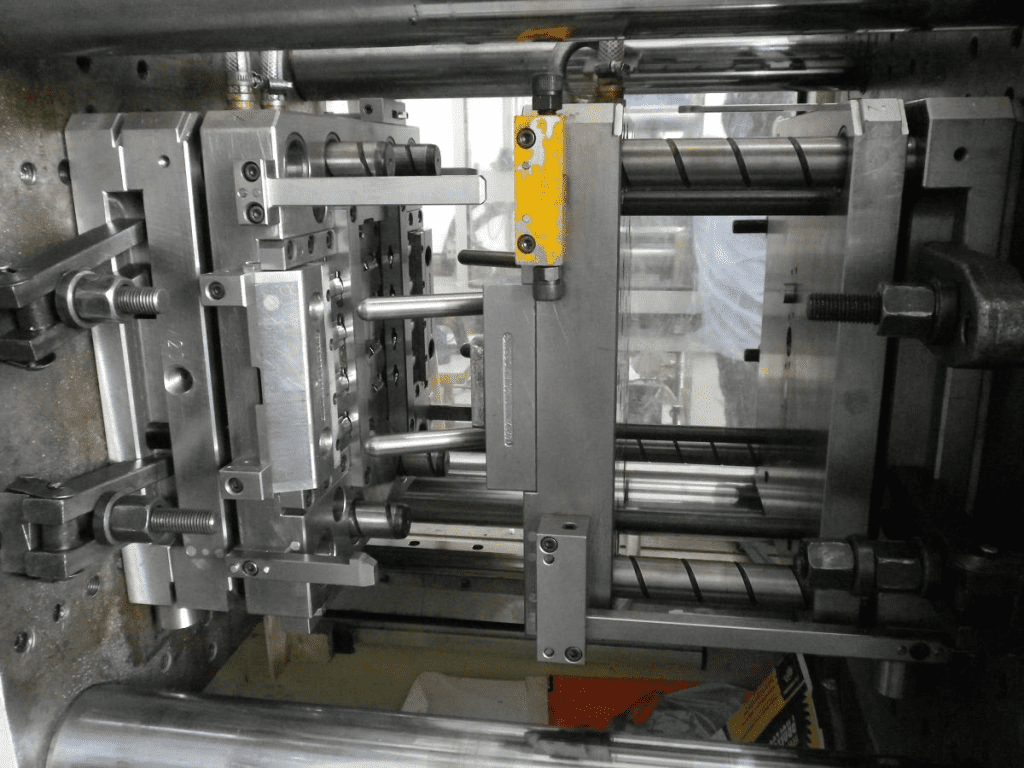Die casting is a kind of pressure casting process. It uses a pressure casting mechanical die casting machine equipped with a casting mold.
The metal, such as copper, zinc, aluminum, or aluminum alloy heating to a liquid state, is poured into the feeding port of the die casting machine. Casting copper, zinc, aluminum, or aluminum alloy parts of the shape and size limited by the mold, such parts are often called die castings. Die casting parts are called differently in different places, such as die casting parts, die casting aluminum, die casting zinc parts, die casting copper parts, copper die casting parts, zinc die casting parts, aluminum die casting parts, aluminum die casting parts, aluminum die casting parts Alloy castings, aluminum alloy die casting parts, etc.
What are the types of die casting?
There are two main types of die casting, hot chamber die casting and cold chamber die casting.
- Hot chamber die casting is the most popular type of die casting. It is also known as gooseneck casting. In the hot chamber die casting, the casting chamber is constantly in contact with a liquid alloy or molten metal passed through a valve into the casting chamber. Piston also plays an important role. It helps press the molten metal in the chamber process at high speed. Hot chamber die-casting is suitable for casting metals with low melting points and fluidity, such as copper, magnesium, zinc, tin, lead, etc. One of the advantages is that direct immersion helps quickly transfer molten metal into a mold cavity.

- Cold chamber die casting, in these types of die casting, immersion of the injection mechanism in the molten bath is eliminated. Molten metal is poured into an injection system in a cold chamber automatically or manually. It is carryout by filling a casting chamber with alloy and pressing it to pass through channels to the die casting mold. Unlike hot chamber die casting, cold chamber die casting is suitable for metals with a higher melting point,s for example, aluminum and copper. That is because of the corrosive nature of the metals, making them not suitable for immersion in hot chamber die casting.

Where is die casting used?
Die casting is a kind of pressure casting part, and its application field is very wide. At present, it has been used in hardware and the entire mechanical and electronic industry, and its use is becoming an expanding trend.
The specific application scope of die castings mainly includes automobile manufacturing, internal combustion engine production, motorcycle manufacturing, motor manufacturing, oil pump manufacturing, transmission machinery manufacturing, construction, hardware, equipment, machine tools, ships, aerospace, automobiles, locomotives, electronics, computers, electrical appliances, lamps and many other fields and so on.
What is the most outstanding advantage for die casting compared with sand casting?
Good product quality
The casting has high dimensional accuracy, high surface finish, stable dimension, and good interchangeability. It can die-cast thin-walled complex parts.
High productivity
Die casting model has a long life. According to the product structure, The life of one die casting mold can reach 50 to 80 thousand times, even more than 100 thousand times, and it is easy to realize mechanization and automation.
Excellent economic results
Due to the precise size of die casting, high surface finish, and high production efficiency, it doesn’t need any mechanical processing, then comes into use directly, or the amount of processing is very litter. For this reason, it not only improves the metal utilization rate but also reduces a lot of processing equipment. In the processing of the die casting, Putting the Inserts, such as steel, iron, copper, etc., can save both assembly time and metal.

What is the disadvantage of die casting?
Although die casting has many advantages, it also has some disadvantages that need to be solved. Such as:
- In the process of die-casting of thick-walled parts, shrinkage cavity is easy to occur, and it is not easy to improve the mechanical strength of products through heat treatment;
- It is difficult to die cast the castings with complex inner concave; For the products with concave cavities, it is suitable for sand casting, low-pressure casting, or gravity casting.
- For High melting point alloy (such as copper), the mold life of die casting is low;
- It is not suitable for small batch production. The main reason is that the manufacturing cost of the die casting mold is high, the mold debugging time is long, and the wage level of die casting workers is high, so the small batch production is not suitable.

